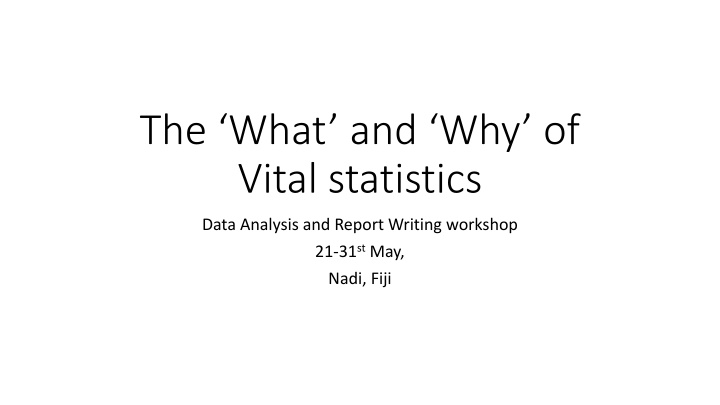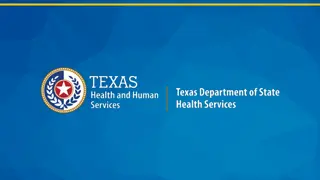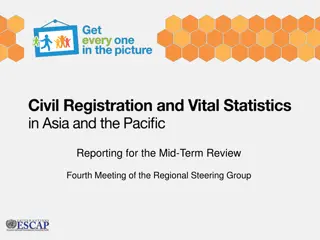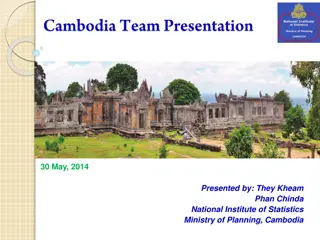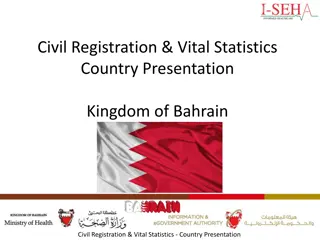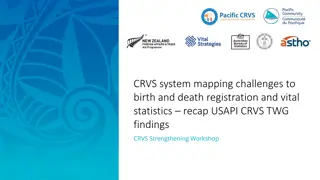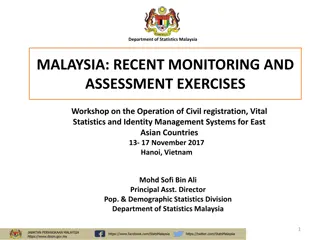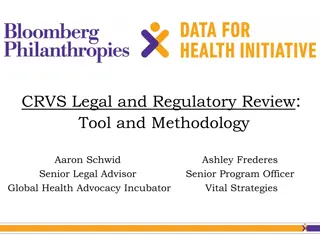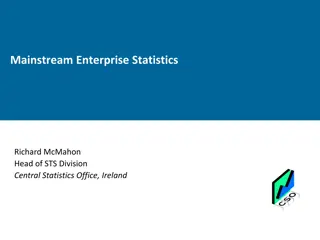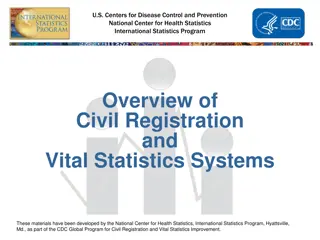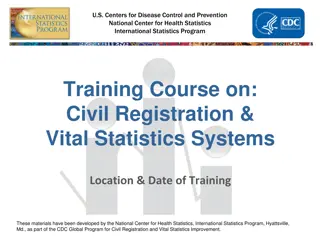Vital Statistics Data Analysis & Report Writing Workshop Overview
Explore the significance of vital statistics, the core data on life events, and their importance in monitoring social and economic development. Understand the sources of vital statistics data, such as civil registration, and learn how to analyze and report on key vital events. Discover the uses of vital statistics in tracking health indicators and population trends for development progress.
Download Presentation

Please find below an Image/Link to download the presentation.
The content on the website is provided AS IS for your information and personal use only. It may not be sold, licensed, or shared on other websites without obtaining consent from the author.If you encounter any issues during the download, it is possible that the publisher has removed the file from their server.
You are allowed to download the files provided on this website for personal or commercial use, subject to the condition that they are used lawfully. All files are the property of their respective owners.
The content on the website is provided AS IS for your information and personal use only. It may not be sold, licensed, or shared on other websites without obtaining consent from the author.
E N D
Presentation Transcript
The What and Why of Vital statistics Data Analysis and Report Writing workshop 21-31stMay, Nadi, Fiji
Outline 1. What are Vital statists? 2. Why we need Vital statistics 3. Sources of Vital statistics data 4. Civil Registration as a source of vital statistics
What do we mean by vital statistics? Definition: The collection of statistics on vital events in a lifetime of a person as well as relevant characteristics of the events themselves and of the person and persons concerned. Vital events: are events concerning life and death of individuals, as well as their family and civil status The UN recognises 10 Vital events for which data are to be collected: Live births, Deaths, foetal deaths, marriages, divorce, Annulment, Separation, adoption, legitimation, Recognition
Priority events The UN provides three classifications of vital events : a) Vital events proper b) Dual events c) Vertical Family events Because they pertain to individuals existence and survival, vital event proper (Live births, deaths and foetal deaths) are ranked to be of highest priority among other events. A governments timely knowledge of the occurrence of these critical events can save a life, family, a village, a community and a country!
Why we need vital event data Vital Statistics provide a bulk of the data needed for monitoring of social and economic development in countries. Accurate data on births, deaths, and cause of death are essential for: Monitoring the health of a population; Identifying health priorities and evaluating health and program impacts; Providing access to real time information on population size and structure; and Providing the necessary data for the calculation of all population based development indicators Used to track development progress. SDG indicators
Uses of vital statistics Vital Event Rates and indicators Numerator (Civil registration) Denominator by source Crude Birth Rate Sex ratio at birth General Fertility rate Live births Live births (Male) Live births Mid-year population* Live births (Female) Mid-year female population (15-49) * i) Live Births Live births to women of a particular age group). Low birth weight infants born alive Age specific fertility rate Mid-year population of female of same age-group* % of low birth weight births Live births in one year % of live births to unmarried women Crude Death rate Infant mortality rate Child Mortality rate Neonatal mortality rate Number of children born alive to unmarried women Deaths in one year Deaths of infants (< 1 year) Deaths of infants (< 5 years) Neonatal deaths Live births in one year Mid-year population* Live births in one year Live births in one year Live births in one year ii) Death Post-neonatal mortality rate Post-neonatal deaths Live births in one year Maternal mortality ratio Age specific mortality rate Maternal deaths Deaths in a particular age group Live births in one year Mid-year population of same age-group* Cause-specific mortality rate Number of deaths from a specific cause Total population* * Requires data from other source in the absence of population register
Example: 2013 Ebola Outbreak in Liberia https://en.wikipedia.org/wiki/Ebola_virus_epidemic_in_Liberia#Hidin g_of_Ebola_infected_and_dead
What are the sources of vital event data? There are two main categories of data sources for which vital statistics data can be drawn from: i) Periodic collections Censuses, household sample surveys conducted say 5 yearly, 10 yearly which collect retrospective info about the number and characteristics of birth and death ii) Administrative (routine collections) Civil registration systems, health information systems, police records (for events of unnatural deaths), other operational admin databases Key difference in these sources is : (i) the frequency for which the are undertaken i.e. stock vs flow (ii) their scope of coverage
Key features of these data sources Data Source Periodicity Sample frame Period of interest Data collection CoD Data Collected? (mortality level data) Census Periodic Whole Population Retrospective Direct and indirect No 5-10 years Survey DHS Periodic Selected sample representative of whole population Retrospective Direct complete birth history No ~ 5 years MICS Periodic 2 stage clustered sample representative of whole population Retrospective Indirect - partial birth history (CEB/CS) No ~ 5-10 years Routine Admin records Civil Registratio n Continuous Whole population (depending on coverage) Current Direct reporting of event Yes Health databases Continuous Whole population / Hospital cases only Current Direct reporting of event Yes Demographic surveillance Sites Continuous Selected areas usually not representative of whole population over time. Current Direct reporting of event Yes
Civil registration as a source of vital statistics The continuous, permanent , compulsory and universal recording of occurrence and characteristics of vital events occurring to a popn in accordance with the laws of a country This method should be distinguished from other methods of data about the population because it is mandated by law to be continuous and permanent. [Para 280 U.N P&R The UN recognises civil registration as being the most reliable source of vital event data and statistics. Key features of the system: a. Universal b. Continuous (incidence vs. prevalence statistics) c. Permanent d. Compulsory gathering However, civil registration systems are often weak and incomplete in most developing countries. Therefore, it has been necessary to use alternate data sources
Civil registration as a source of vital statistics In some instances data collected through health information systems/ through health databases are found to be more complete than civil registration data With the incompleteness of CR systems, censuses have been used as the primary sources of vital event data and statistics in the Pacific. The increasing need to report against key population health indicators ( as required by SDGs) calls for strong Administrative collections
Where does your data come from? Think about the data you brought to the course and where it comes from Why was it collected? How was it collected and by whom? What are the strengths and weaknesses of that data collection? What impact is that likely to have on your data?
